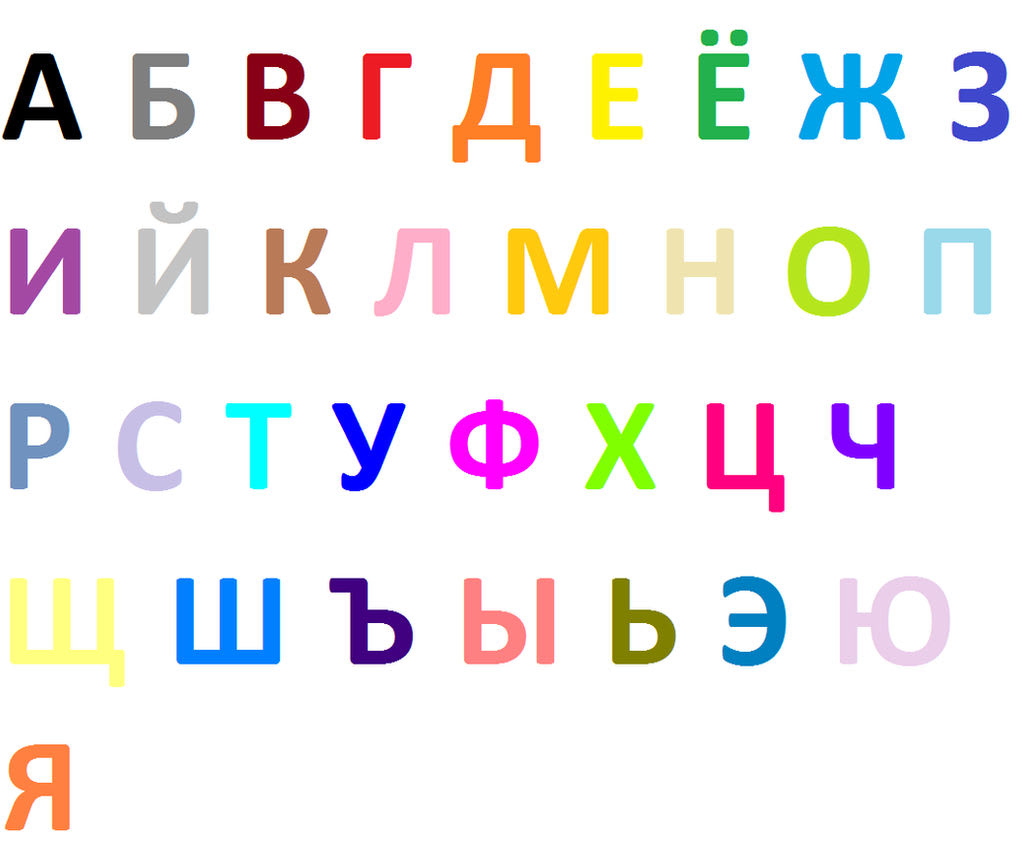Russian for Beginners: The Cyrillic Alphabet
An intro to the Russian for Beginners Vocal series. Learn the Cyrillic alphabet, as well as the history behind it!

Intro to the Russian for Beginner's series
As I've mentioned in previous Vocal stories, I've been studying Russian since I was in my teen years. It was quite the journey for me, because I had to study the Cyrillic alphabet, which is what this Vocal story is about, the vocabulary, the greetings, as well as the grammar, which is what I'm currently trying to master. Russian is a tough language, I'm not going to deny it, but if I was passionate about it, I didn't want to say no to myself. СловордNo matter how difficult the language was at first, it was worth it, because I use it when I visit the Russian shops, when I converse with my Russian speaking friends, when I meet Russian speaking locals, etc. It's quite practical in the area I've lived in over the years. Although I gradually starting to grasp the essence of the Russian grammar, I'm still working on it, because it's so complicated and I want to ensure I'm understanding all the rules behind it. But I've mastered the alphabet, my vocabulary, and the greetings.
I decided to create the Russian for Beginner's Vocal series, because I want to share my knowledge of the Russian language with the whole Vocal community, and I want to show people who have the desire to learn the Russian language how such a difficult language can become an easier and fun one! Whether you know someone who speaks Russian, you have family members and/or friends who speak Russian, you live in a Russian neighbourhood, or if you plan to travel to a Russian speaking country in the future, you're reasons for learning the Russian language is valid! Hopefully, these written tutorials will make you motivated to embark on your Russian language journeys.
Удачи! (Oo-dah-chee)= "Good luck!" in Russian.
The definition of the Cyrillic alphabet
The Cyrillic script, also known as the Slavic script, is a writing system that was formed in the 9th-10th century CE for Slavic-speaking people of the Eastern Orthodox religion. Many of the letters are different from those in the Latin alphabet, which is used to write English and various western European languages such as Italian, Spanish, French, etc.
History of the Cyrillic alphabet
The Cyrillic alphabet was an unexpected outcome of the missionary work that was completed by the 9th-century "Apostles of the Slavs" St. Cyril (also known as Constantine), and St. Methodius. This voyage to Moravia, a historical region in central Europe, lasted only several decades. Their disciples visited South Slavic areas of the first Bulgarian empire, including what are now Bulgaria, and the Republic of North Macedonia, where in the 900's they developed a new script for Slavic languages, based on uppercase Greek letters, with some additions; this later script (drawing on the name of Cyril), was called Cyrillic after St. Cyril. Saints Naum and Clements, both of Ohrid, as well as in the company of the disciples of St. Cyril and St. Methodius, are occasionally credited with having produced the Cyrillic alphabet.
Which languages use the Cyrillic alphabet?
The Cyrillic alphabet is utilized for over 50 languages such as Belarusian, Ukrainian, Kazakh, Kyrgyz, Mongolian, Macedonian, Russian, Tatar (a language that's spoken in the region of Tatarstan, Russia), Bashkir (a dialect that's spoken in the region of Bashkortostan Russia. It's similar to the Tatar language), Serbian, Turkmen, Tajik (a dialect of the Persian language), Komi (a dialect that's spoken, written, and read in the Komi Republic of Russia), etc. That being said, Nursultan Nazarbayev, the president of Kazakhstan, stated that he'll change the Kazakh alphabet from Cyrillic to Latin by 2025.
In the 1940's, some post-Soviet countries such as Kyrgyzstan, Uzbekistan, Tajikistan, and Kazakhstan adopted the Cyrillic alphabet to reflect wider societal modifications, which is called "Russification". This was because Moscow, the capital city of Russia, attempted to form a shared sense of common Soviet culture. Mongolia was influenced by the Soviet Union, so they adopted the Cyrillic alphabet and they've been utilizing it since the 1940's.
Letters of the Cyrillic alphabet
The amount of letters in the Cyrillic alphabet depends on the type of language. For example, the Modern Russian language has 33, Ukrainian has around 32-33 letters, Serbian has 30 letters, and Bulgarian has 30 letters. Since the Modern Russian alphabet has been taken to many other Slavic and non-Slavic speaking languages, some languages like Macedonian, Kazakh, Kyrgyz, Tatar, Bashkir, and Mongolian will add in more letters.
Here are the letters of the Modern Russian alphabet, as well as their pronunciations. To learn more about the Cyrillic alphabet used in the other languages I've mentioned above or that I've not mentioned above, I'll link some more articles on the Cyrillic alphabet for the other languages in the references section down below.
А (Ah) = Ah as an Apple.
Б (Be) = Be as in Book.
В (Ve) = Ve as in Violet.
Г (Ge) = Ge as in Game.
Д (De) = De as in Domino.
Е (Ye) = Ye as in Yes.
Ё (Yo) = Yo as in Yolk.
Ж (Zhe) = Zhe as in Pleasure.
З (Ze) = Z as in Zebra.
И (Eee) = E as in Easy.
Й (Short Ee) = Short Ee as in Yogurt.
К (Ke) = Ke as in Correct or Key.
Л (Le) = Le as in Lime.
М (Me) = Me as in Monkey.
Н (Ne) = Ne as in Nest.
О (Ooh) = Ooh as in Orange.
П (Pe) = Pe as in Parrot.
Р (Re) = Re as in Raspberry.
С (Se) = Se as in Seaweed.
Т (Te) = T as in Toy.
У (Oo) = Oo as in Moon.
Ф (Fe) = Fe as in Flower.
Х (Khe) = Khe as in Challah (a type of egg bread of Ashkenazi Jewish origin. It is mainly eaten on the evening of the Sabbath, but it can be consumed any time).
Ц (Tse) = Tse as in Cots.
Ч (Che) = Che as in Cheese.
Ш (She) = She as in Shadow.
Щ (Sche) = Sche as in Fresh Sheets.
Ь (silent) = unpronounced because it's silent.
Ы (Y) = Y as in Hockey. This letter is not used in the Ukrainian, Tajik, Macedonian, Serbian, Bulgarian, Uzbek, and Montenegrin languages. This letter is only used in the Russian, Tatar, Mongolian, Bashkir, Komi, Kyrgyz, Kazakh, and Belarusian languages. This letter can also be used in other languages in the Turkic language families spoken in Russia or in other Russian speaking countries.
Ъ (silent) = unpronounced because it's silent.
Э (Eh) = Eh as in Excited.
Ю (Yoo) = Yoo as in Eucalyptus.
Я (Ya) = Ya as in Yapping.
Tips for learning a language that uses the Cyrillic alphabet
As you all may know by now, we all have our unique ways of processing information. You may learn faster by seeing visuals, reading information, hearing information, or by doing physical tasks. It truly doesn't matter how you learn the information at the end. Depending on how you learn best, there are a variety of ways you can learn the Cyrillic alphabet, and master it! Here are a few effective and inexpensive ways I know, and how I managed to learn the Cyrillic alphabet!
1) Watch YouTube tutorials.
2) Write out the letters in your notebook or on a piece of paper.
3) Find and print off Cyrillic alphabet charts and study them a little bit each day, evening, and/or night.
4) Buy Cyrillic alphabet books. Anyone can use this method, but this is especially effective for kids who want to learn and master the Cyrillic alphabet.
5) Play Russian language word games to advance your Russian language skills, as well as your knowledge of the Cyrillic alphabet. One of my all-time favourite games is SloWord (Словорд). This game is available on all iOS devices, and is free. You can play in a wide range of languages like Tatar, Bashkir, Chechen, Russian, Ukrainian, etc. You can also purchase Russian word puzzle books/magazine online or at your local Russian bookstore. This is a fantastic way to not just master the Cyrillic alphabet, but to boost your vocabulary in any language that uses the Cyrillic alphabet.
You can use one of these methods, or you can use a variety of these methods! Just pick the method(s) that are the most suitable for you.
If you learn best by working with someone, you can also consider hiring a language tutor, but it can be pricey. It's also possible to find a tutor who doesn't charge as much as other tutors. Language classes are also an amazing way to not just learn the language from a native speaker, but to learn with other people who are learning the language. It's a great opportunity to make friends, and share your knowledge with others! Some classes are expensive, but you can find a cheaper or free class in your area, or even virtually! I have a great resource I'll link in the references section below!

Thank you very much for taking the time to read another one of my Vocal stories. If you enjoyed this informative blog, please give it a ❤️, share it with others, comment, and please feel free to send me a tip/pledge to show your appreciation and support. To find and read more exciting content, please consider subscribing and visiting my public profile. Stay tuned for more poems, articles, recipes, blogs, as well as the upcoming Russian for Beginners Vocal stories!
I wish you all the best in your Russian language journeys!
Please feel free to connect with me outside of Vocal!
IG: @tdwrites24
FB: Talia Devora

References
About the Creator
Talia Devora
Poetess, visual artist and lifestyle/quiz writer! My pastimes include reading, sleeping, gaming, music, fitness, etc! Be yourselves, be kind and value life! Let's connect and be friends!
My IG accounts: @tdwrites24 & @tdcreates97
Reader insights
Outstanding
Excellent work. Looking forward to reading more!
Top insights
Compelling and original writing
Creative use of language & vocab
Easy to read and follow
Well-structured & engaging content
Expert insights and opinions
Arguments were carefully researched and presented
Eye opening
Niche topic & fresh perspectives
Masterful proofreading
Zero grammar & spelling mistakes
On-point and relevant
Writing reflected the title & theme






Comments (1)
Very interesting article. I might try this and see what I can do it.